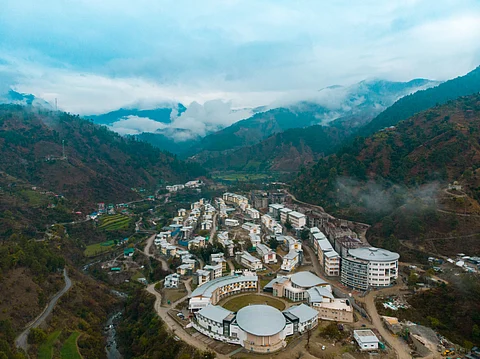

Researchers from the Indian Institute of Technology Mandi have identified the states with a high probability of being the first hotspots for the spread of COVID-19. The researchers reviewed the spread of COVID-19 and past pandemics in India for this study.
According to the study performed on 640 districts from April 1 to December 25, 2020, the hotspots of the pandemic in India have been states with high international migration and districts located close to large water bodies. States such as Maharashtra, Tamil Nadu, Gujarat, Rajasthan, Karnataka, Delhi, Uttar Pradesh, and Andhra Pradesh were the hotspots for the COVID-19 pandemic in India. In almost all of these states, international migration is a significant factor. For this reason, the researchers recommend that in future cases of pandemic outbreaks, travel to and from these states should be carefully monitored.
Researchers reviewed the past pandemics and found common patterns between the Spanish Flu, H1N1, Swine Flu and COVID-19 outbreaks. It shows that water bodies have a strong influence on a region’s microclimate in terms of temperature and humidity, contributing significantly to regional climate change. It is commonly referred to as the lake effect. The research was led by Dr Sarita Azad, Associate Professor, School of Basic Science, IIT Mandi, and co-authored by Neeraj Poonia, research scholar, IIT Mandi. The findings of the research have been published in Current Science, a prestigious peer-reviewed journal.
Explaining the key findings of this research, Dr Sarita Azad said, “There has been a striking similarity in the focal point and route of transmission of different epidemics in India, such as Spanish flu, H1N1, Swine flu and COVID-19. Mostly all the pandemics have started and found their epicentres in the northern, western, and southern parts of India.”
She further added, “Later, we also found that districts with direct access to large water bodies had a sudden increase in cases during monsoon (as high as 800%) compared to the preceding season. Hence, strict precautionary measures should be imposed in these districts before the beginning of monsoon season during an outbreak.”
Furthermore, the researchers have examined the temperature variations across districts that are close to large bodies of water to understand the spread of COVID-19 in these areas. The average minimum and maximum temperatures in these districts are about 3-5°C lower than neighbourhoods in July, which is attributed to the lake effect. The cooler climate conditions may have contributed to the increase in cases in districts that are close to water bodies.
Researchers recommend a targeted approach to be taken in states with a higher international migration rate and recommend that strict precautionary measures should be taken in districts near large bodies of water before the monsoon season begins. Even though the transmission rate stabilized across the country in the winter season, the northern regions witnessed the highest increase in the number of cases. The complete trajectory of COVID-19 is shown in the figure below. The researchers have also identified the states and districts where the government should have a more tailored and targeted approach in case a future outbreak occurs.
